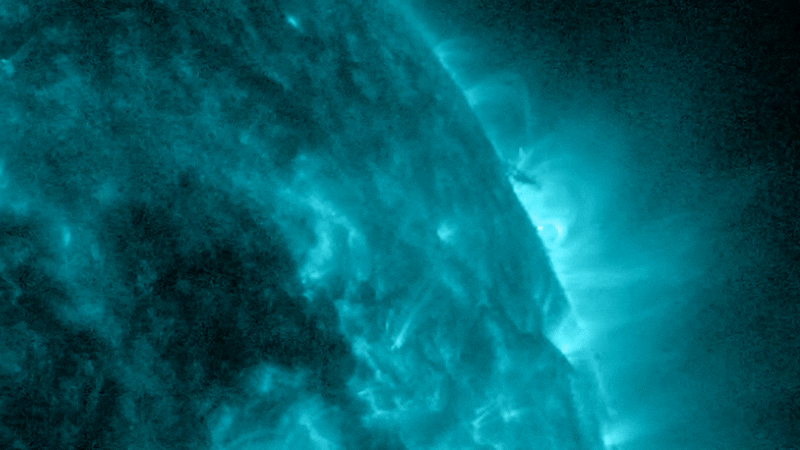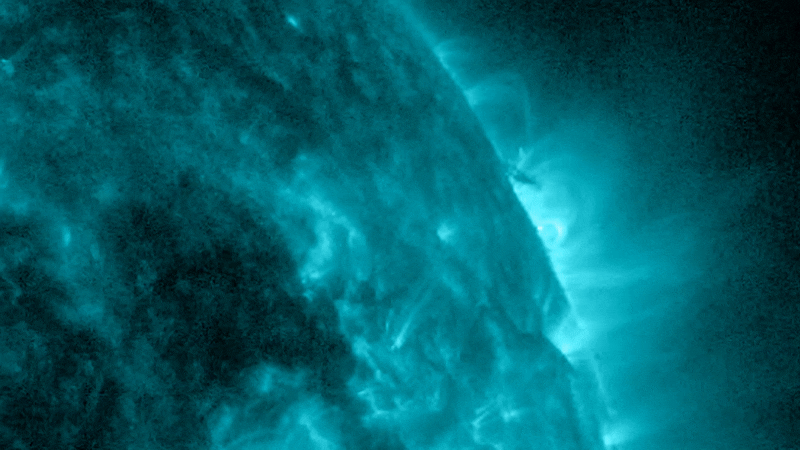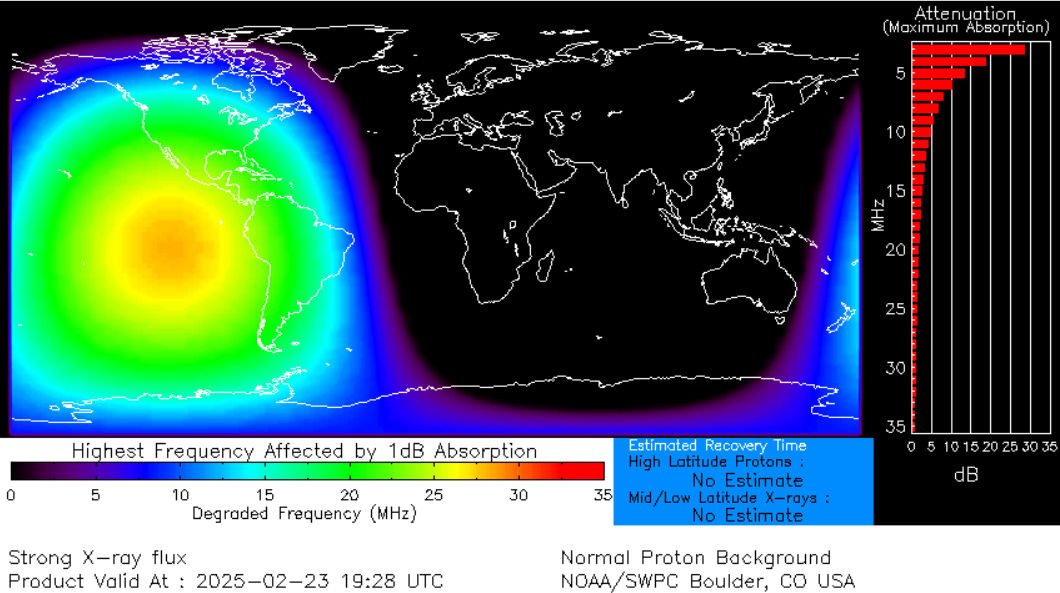
The weekend concluded dramatically as a sunspot, moving out of view, unleashed a significant solar flare on Sunday afternoon.
At 2:27 p.m. EST (1927 GMT) on February 24, an X2.0 solar flare reached its peak from sunspot AR 4001, which was situated just beyond the northwestern edge of the Sun. This event resulted in a shortwave radio blackout over parts of the Pacific Ocean due to heightened ultraviolet (UV) radiation emitted during the flare. During such blackouts, there is either a total or near-complete interruption of high-frequency (HF) radio signals in sunlit areas.
X-class flares represent the most powerful category of solar flares, classified using a four-tier scale. Each increase in classification indicates a tenfold increase in intensity. The hierarchy is as follows: X-class flares are the strongest, followed by M-class, C-class, and finally B-class, which is the lowest. The numerical designation, such as 2.0 in this incident, specifies the individual flare’s strength.

Each radio blackout is classified according to the National Oceanic and Atmospheric Administration (NOAA)’s Space Weather Prediction Center (SWPC) Space Weather Scale, which details the potential impact on Earth. This specific occurrence was classified as an R3 “Strong”, positioned in the middle of the scale, which includes “Extreme” (R5) and “Severe” (R4) categories.

Experts at NOAA’s SWPC indicated in their forecast discussion released Monday (February 24) that there are no current indications of a coronal mass ejection (CME) aimed at Earth as a result of the X2.0 flare.
Nonetheless, solar observation spacecraft captured remarkable imagery of the ejection as it released plasma and magnetic fields into space.
Here is the CME from the X2.0 limb flare observed by LASCO C2. An impressive CME! It spans about 150° in position angle. Although it may have a very minor Earth-directed component, it is not significant. We will continue to monitor… https://t.co/elRJlH8Zwb February 24, 2025
Coronal mass ejections involve the expulsion of plasma and solar magnetic fields into space, and if they reach Earth, they can lead to geomagnetic storms. These storms can affect power infrastructures and create stunning displays of auroras in lower latitudes than usual.
While this particular event did not result in a CME that could affect Earth, SWPC specialists will continue to observe solar activity for the possibility of further solar flares. They mentioned in a recent announcement that there remains a “slight” chance of similar strength events occurring through the week.









